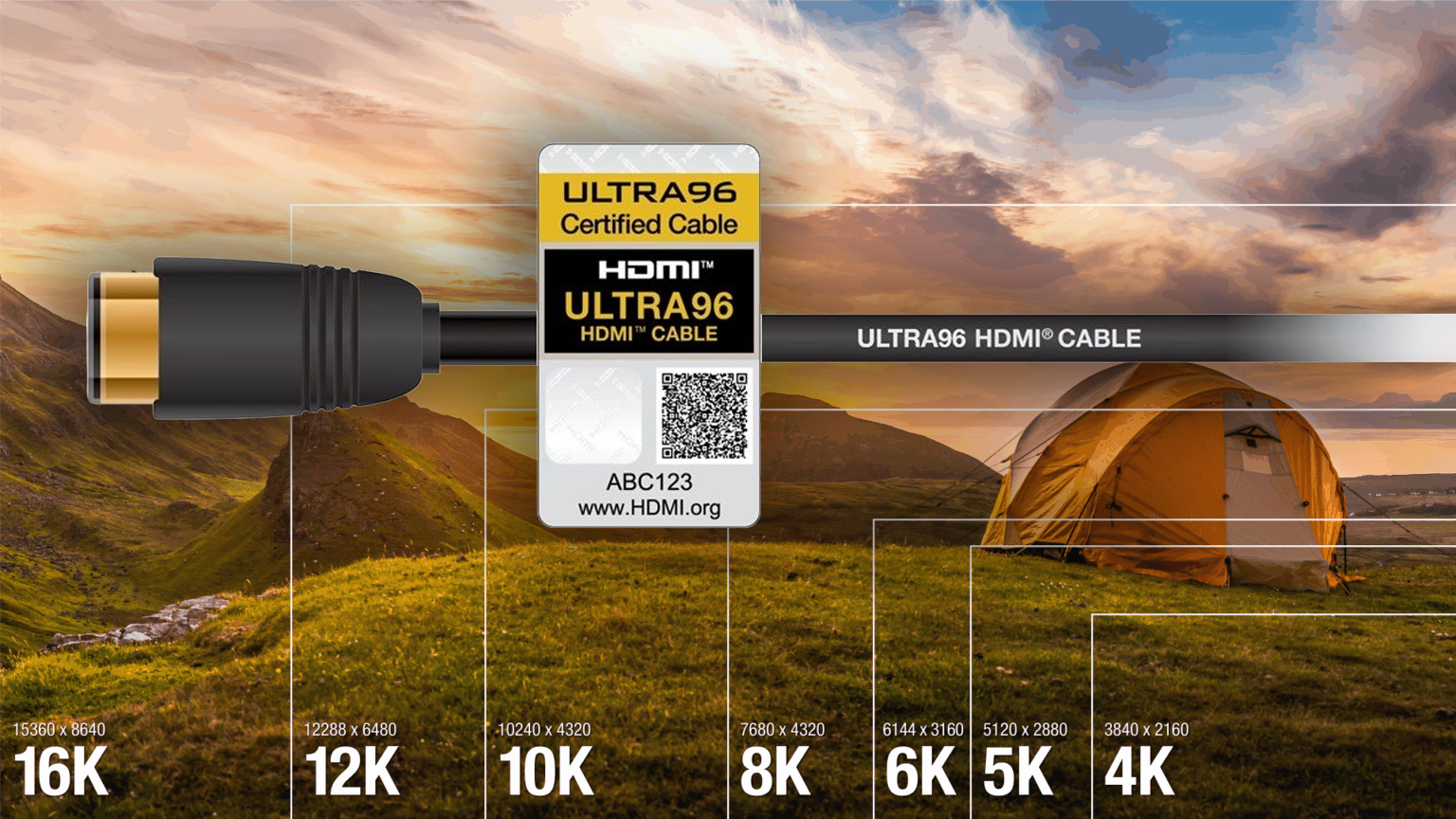Last week, the HDMI 2.2 standard was ratified, paving the way for extremely high-bandwidth screen connections as far back as June 26, 2025, when the HDMI Forum announced and released it to manufacturers. Resolutions such as 16K at 60 frames per second are now supported, with fully uncompressed 4K at 240 fps still well within specifications, thanks to DSC compression pushing it further to notable 480 fps. However, in a world where 8K screens, especially televisions, remain relatively scarce, it’s questioned whether HDMI 2.2 is truly necessary. The key to the HDMI 2.2 specification lies in doubling the available bandwidth compared to HDMI 2.1, requiring a new cable standard, Ultra96, to ensure the screen’s output signal reaches the new generation of screens. This works by current “Ultra High Speed” HDMI cables being sized for a maximum of 48 Gbps, the HDMI 2.1 limit, while Ultra96 handles the increased bandwidth demands of the new standard, making 64 Gbps, 80 Gbps, and 96 Gbps signals necessitate the new cable. Memory bandwidth in the HDMI 2.2 standard goes up to 96 gigabits per second (Gbps). This opens the door to screens with a vastly superior resolution, as the HDMI grouping refers to 16K (15360×8640) at 60 fps and 12K (12880×6480) at 120 fps as potential standards. It seems like an obscene amount of pixels, entirely unnecessary, in fact, but it’s quite clear that the standard isn’t about today’s screens but tomorrow’s.
In addition to higher resolutions, HDMI 2.2 also pertains to greater fidelity and precision in our current formats. The new Latency Indication Protocol (LIP) is leveraged in the HDMI 2.2 standard to fix audio delay, but all devices in a chain must support LIP for this feature to work. HDMI 2.2 can handle 8K at 60 fps, just like HDMI 2.1, with the difference being full chroma subsampling of 4:4:4 and 10-12 bit colors. The stage is set for much higher resolution screens in the future, though there are limits: HDMI 2.2 couldn’t function with a Las Vegas sphere at 60 fps (requiring a 16K by 16K resolution!).
What’s more interesting in the short term is that the existing 4K standard can significantly benefit. For games, 4K resolution is now established at the high end, but the race is to provide it at ever-increasing refresh rates, and believe it or not, 240Hz and 480Hz with DSC serve a real purpose. With hardware capable of accommodating the limits of 4K screens at 240 Hz, even less powerful hardware might enter the conversation. 240 Hz without compression via HDMI 2.2 is good, but 480 Hz with DSC gets us closer to eliminating flat-panel artifacts. Of course, DisplayPort is usually the connection of choice for PCs, where the latest standard 2.1b takes us up to 80 Gbps bandwidth, but I’d expect HDMI 2.2 support to also be included in future screens. Perhaps more relevant for TVs is the recent rumor that AMD’s upcoming architecture, dubbed UDNA, has been suggested to support HDMI 2.2. If true, it implies next-gen consoles will have access to these extreme resolutions. Typically, top-tier PC experience paves the way for the next generation of consoles, and though this may be a bit optimistic, the shift towards supporting machine learning-based features means that frame generation is almost certainly a key component in any hardware Sony and Microsoft might provide next.
HDMI 2.2 is just one of the topics discussed in DF Direct Weekly, our regular program that covers the latest news on games and technology. We discuss the controversy surrounding the Switch 2’s “slow” screen, now backed by benchmark data, and test the new “pure” mode of Fast Fusion, which completely eliminates the controversial DLSS upscaling. We also spend some time speculating about the upcoming RTX 5050, while John and Oliver discuss their latest screen acquisitions. The OLED vs LCD debate continues! However, if the prospect of sitting for two hours to watch/listen to us seems too demanding, consider subscribing to DF Clips, where DF, along with other Digital Foundry content, is condensed into smaller, more digestible videos. We usually publish at least two of these videos per day. DF Direct Weekly started as a community podcast for the DF Supporter Program but has evolved into a crucial part of our YouTube channel. If you’re a supporter, you have the opportunity to help shape the program, submit your questions, and get early access (usually Saturday afternoon/night). Supporters also have opportunities for early news updates and, of course, high-quality video downloads of everything we produce. We don’t always talk about the Supporter Program, but Digital Foundry wouldn’t exist without it, and our vibrant Discord community is also very special. See you next week!
Have any thoughts?
Share your reaction or leave a quick response — we’d love to hear what you think!
